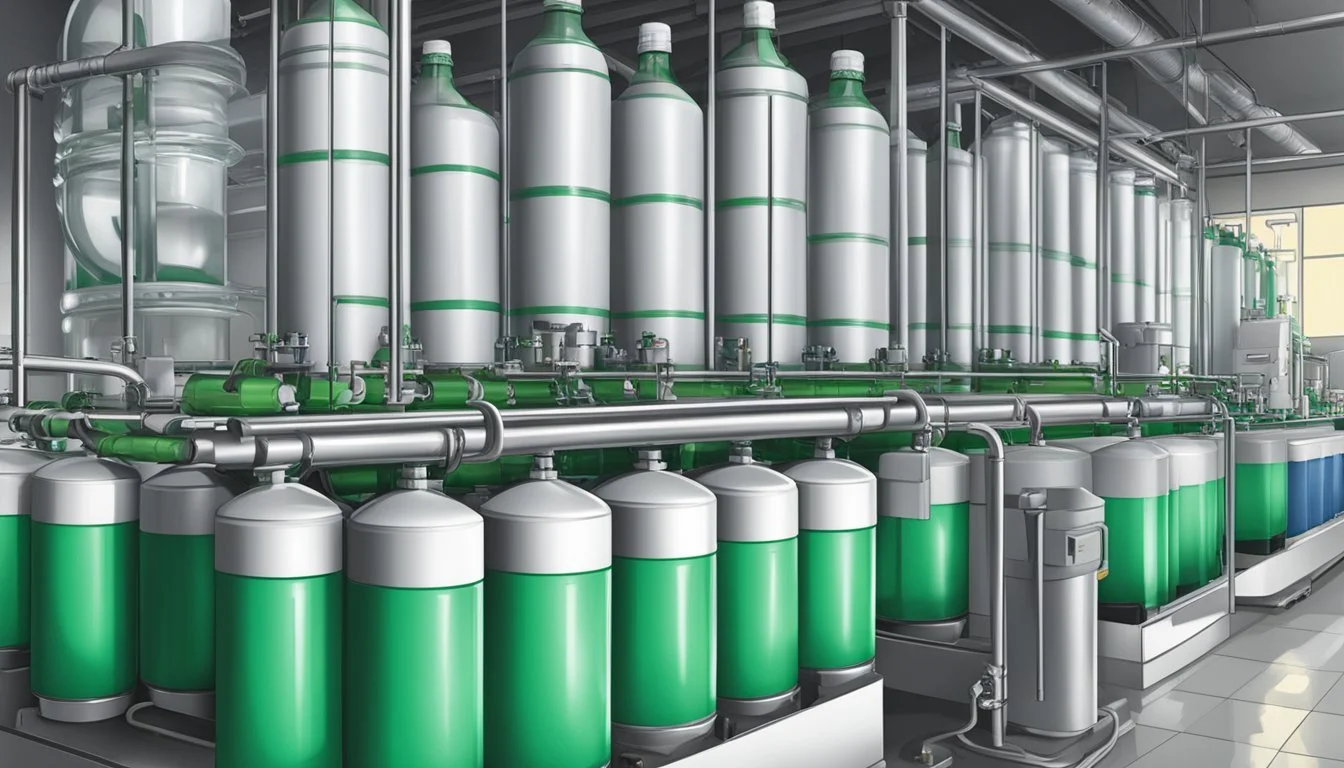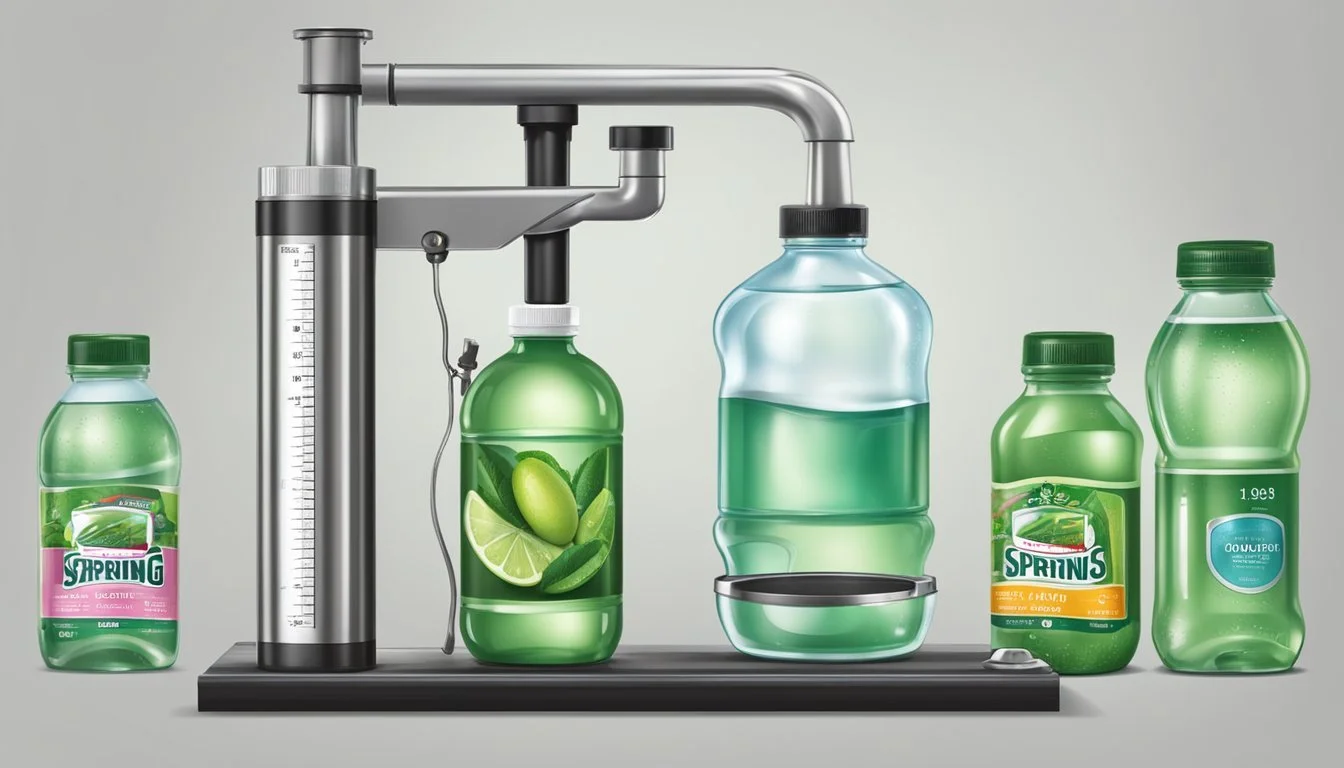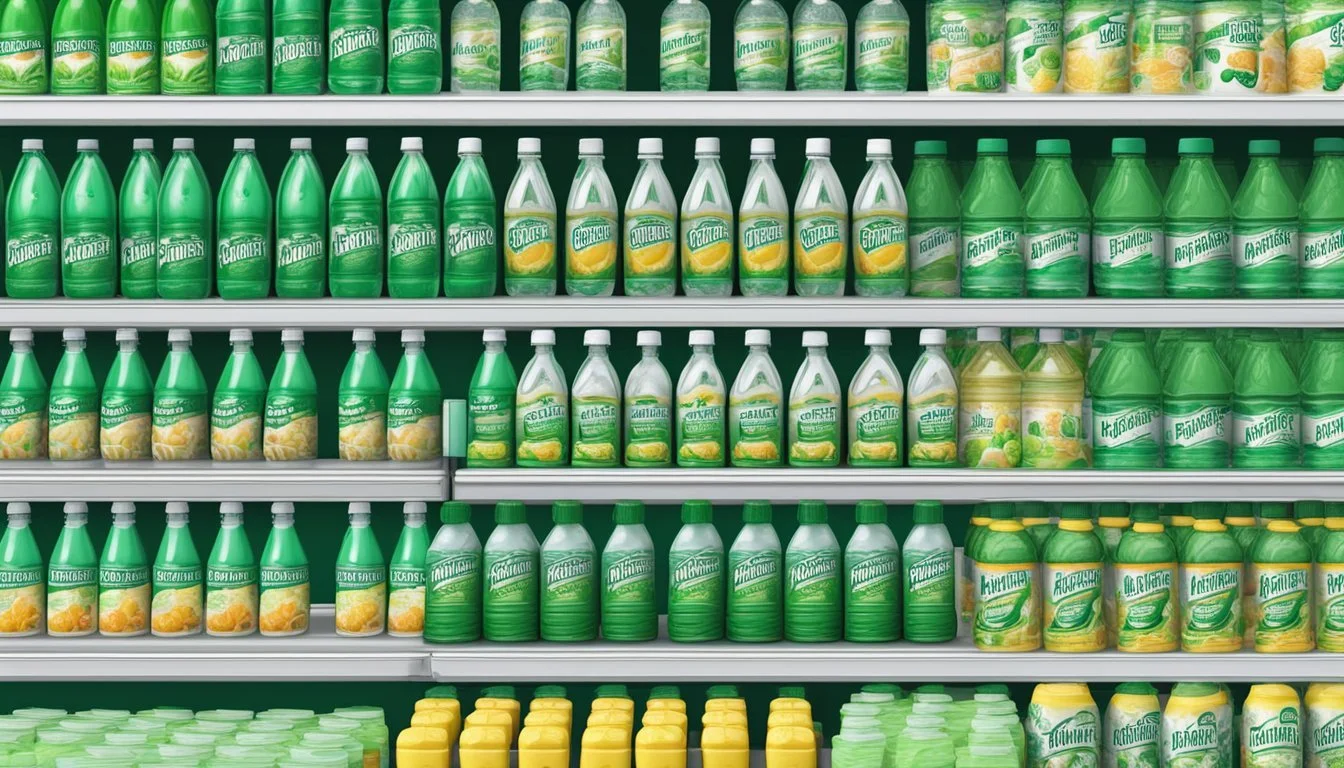Poland Spring vs. Weird Water
Comparing Taste, Quality, and Value
When it comes to choosing between Poland Spring and Weird Water, the decision often hinges on specific factors like taste, purity, and origin. Poland Spring, a staple name in the bottled water industry, prides itself on its natural spring water sourced from Maine. The brand has built a reputation over decades for delivering clean, crisp water that consumers trust.
In contrast, Weird Water offers a unique twist to the bottled water market with its claim of unusual sourcing and added minerals. This brand targets those looking for something beyond the ordinary hydration experience. For those who appreciate classic spring water with a verified history, Poland Spring might be the preferred choice; however, those seeking novelty and distinctive additives might lean toward Weird Water.
By comparing these two brands, consumers can make an informed choice that aligns with their hydration needs and preferences. From traditional purity to innovative enhancements, this article will explore which brand stands out across various criteria.
Origin and Source Evaluation
A detailed exploration of the origins and water sources of Poland Spring and Weird Water provides valuable insights into their quality and heritage.
Poland Spring: A Natural Legacy
Poland Spring sources its water from natural springs located in Maine. This brand has a rich history, dating back to 1845.
The company taps into multiple springs in the region, ensuring a consistent supply of fresh water. These springs are known for their high quality and purity, offering consumers the reassurance of natural spring water.
The water is carefully sourced, balancing environmental impact with sustainable practices. Poland Spring is committed to maintaining the pristine condition of these natural springs. Key springs include:
Poland Spring, Maine
Springs in Fryeburg, Maine
This water undergoes minimal processing, preserving its natural taste and composition.
Weird Water: Unveiling the Mystery
Weird Water, though less established, promises a unique experience with its sourcing methods. Unlike Poland Spring, Weird Water often uses a blend of sources, combining both public water sources and groundwater.
Each batch may vary slightly due to the mixed origins of its water. The brand emphasizes innovation and variety in its offerings.
Weird Water's approach to water sourcing allows flexibility but may lack the consistency found in single-source brands like Poland Spring. Water sources include:
Municipal water supplies
Groundwater wells
This diversity can appeal to those seeking a different kind of bottled water experience. However, it is important for consumers to be aware of the varying sources and treatment methods used.
Quality and Purity Assessment
Poland Spring and Weird Water are evaluated based on their mineral content and health implications, as well as their safety standards concerning contaminants.
Mineral Content and Health Implications
Poland Spring is known for its natural spring water, sourced from multiple locations in Maine. The water contains minerals such as calcium, magnesium, and other dissolved solids that occur naturally and contribute to the overall taste and potential health benefits.
Weird Water, on the other hand, claims to have a unique mineral blend, often incorporating elements like potassium and sodium. These minerals can aid in hydration and are beneficial for muscle function and overall health.
Both brands adhere to FDA regulations on mineral content, ensuring that they do not exceed recommended levels for safe consumption. Consumers interested in specific health benefits may prefer one brand over the other based on their mineral preferences.
Contaminants and Safety Standards
Poland Spring adheres to strict safety standards, filtering its water to remove contaminants such as chlorine, lead, and PFAS chemicals. The brand employs third-party testing to meet EPA and FDA safety standards, ensuring that heavy metals and other hazardous contaminants are kept to minimal levels.
Weird Water emphasizes advanced purification techniques, including reverse osmosis and UV treatment. These processes aim to eliminate impurities and ensure water purity. Regular testing is conducted to maintain compliance with safety standards.
Both brands strive to provide pure and safe drinking water, but the difference lies in their filtration methods and emphasis on specific contaminants.
Tasting Notes
Examining the taste profiles of Poland Spring and Weird Water reveals the unique characteristics that set them apart. While Poland Spring offers a crisp experience due to its natural source, Weird Water adds a twist with its distinct formulation.
The Flavor Profile of Natural Spring Water
Poland Spring sources its water from natural springs, imparting a clean, crisp taste that reflects its mineral content. The presence of natural minerals, like calcium and magnesium, gives it a subtle yet distinctive flavor profile.
In comparison, Weird Water includes purified water enriched with electrolytes for taste. This results in a more pronounced, slightly minerally flavor that some consumers find invigorating. The differing sources of these waters significantly impact their taste profiles, appealing to diverse preferences.
Aftertaste and Refreshment Factor
Poland Spring is often praised for its lack of aftertaste. Its balanced mineral content ensures a refreshing finish without lingering flavors. This makes it an ideal choice for those who prefer neutral-tasting water.
On the other hand, Weird Water's added electrolytes can sometimes leave a mild aftertaste, which some find refreshing while others might find persistent. Its formulation can feel more invigorating due to the added minerals, catering to individuals seeking a more robust taste experience.
By contrasting these key aspects, it becomes evident that personal preferences play a significant role in choosing between these two bottled water options.
Branding and Consumer Perception
Poland Spring and Weird Water have distinct market presences and approaches to public image, shaped by their history and marketing strategies. Comparing their market presence and packaging highlights the key factors that influence consumer perception.
Market Presence and Recognition
Poland Spring, a product of Bluetriton Brands, has a long-standing history, particularly in the northeastern United States. Originating from natural springs in Maine since the 1800s, it has established itself as a household name. This long history contributes to strong brand recognition and trust.
Weird Water is a newer entrant in the bottled water industry, aiming to attract a younger, eco-conscious demographic. Their marketing emphasizes uniqueness and sustainability, setting them apart from traditional brands. Bold social media campaigns and influencer partnerships help Weird Water gain attention in a crowded market.
Nestlé Waters and its brands like Pure Life and Acqua Panna, as well as competitors such as Coca-Cola's Dasani and PepsiCo's Aquafina, dominate the sector. Poland Spring's recognition is on par with these giants due to its heritage and consistent quality. Weird Water, though less known, leverages niche marketing to build a loyal customer base.
Packaging and Public Image
Poland Spring’s packaging is classic, often featuring images of natural springs and green landscapes, reinforcing its connection to nature. The bottles are typically BPA-free and have been gradually incorporating more eco-friendly materials to appeal to environmentally conscious consumers. This aligns with the trends in the bottled water industry towards sustainability.
Weird Water uses innovative and bold packaging aimed at standing out on the shelves. Bright colors and quirky designs are central to their branding strategy. The use of environmentally friendly materials, like recycled and compostable plastics, is heavily marketed to highlight their commitment to sustainability. This approach attracts consumers looking for modern and responsible choices.
Poland Spring maintains a traditional image of purity and reliability, while Weird Water cultivates a contemporary and environmentally friendly persona. Both brands effectively use their packaging to communicate their values and appeal to their respective target demographics.
In comparison with other brands like Evian, San Pellegrino, and Core Hydration, Poland Spring's packaging reinforces its age-old natural appeal, while Weird Water stands out with its striking, modern design.
Filtration and Purification Processes
Poland Spring and Weird Water utilize different techniques to ensure their products are free of contaminants and deliver on taste and quality. Understanding these processes reveals their respective strengths and limitations.
The Science of Clean Water
Poland Spring employs natural filtration and regulatory standard processes. Their water is naturally filtered through layers of sand and gravel, which helps remove impurities while maintaining mineral content.
Weird Water incorporates a more engineered process known as Hydro-7. This advanced system uses multiple filtration steps, including reverse osmosis, to eliminate contaminants. Ozone is often applied for sterilization, ensuring the water meets purity standards.
Natural Filtration
Relies on geological processes
Preserves minerals
May not remove all small particles
Engineered Filtration
Uses reverse osmosis
Achieves higher purity levels
Can strip away beneficial minerals
Bottled vs. Tap: Filtration Comparison
Bottled water like Poland Spring and Weird Water provides controlled and verified purification. Tap water, however, undergoes municipal treatment, which varies by location.
Poland Spring
Utilizes natural sources
Tested for contaminants
Regulated at multiple levels
Weird Water
Employs reverse osmosis
Enhanced with electrolytes
Sterilized with ozone
Tap Water
Filtration depends on local infrastructure
Treated with chemicals like chlorine
Subject to contaminants and quality issues
Consumers must weigh the consistency and enhanced purification of bottled water brands against the variable quality of tap water. Poland Spring and Weird Water offer reliable alternatives with distinct methodologies ensuring clean and safe drinking water.
Health and Hydration
Understanding how Poland Spring and Weird Water impact hydration and health is essential for choosing the best bottled water. Both brands offer unique compositions that affect nutrient absorption and electrolyte balance.
Hydration and Nutrient Absorption
Hydration is critical for overall well-being, playing a pivotal role in bodily functions. Poland Spring and Weird Water both ensure hydration, but their mineral content can influence nutrient absorption.
Poland Spring, sourced from natural springs, contains minerals like calcium and magnesium. These minerals support muscle function and bone health, enhancing nutrient absorption.
Weird Water, though often marketed as an artisanal option, may have variable mineral content depending on its source. Some batches could be rich in essential minerals, while others might be less effective at supporting nutrient absorption.
Key factors to consider:
Mineral Type: Essential for muscle and bone health.
Consistency: Predictable mineral levels in Poland Spring versus potential variability in Weird Water.
The Role of Electrolytes in Hydration
Electrolytes are crucial for maintaining fluid balance and muscle function. Poland Spring and Weird Water both contribute to electrolyte intake, but with differences.
Poland Spring typically has well-defined levels of electrolytes such as sodium, potassium, and calcium. This consistency helps ensure reliable hydration benefits, aiding in fluid balance and preventing dehydration.
Weird Water might offer unique electrolyte profiles based on its sourcing, providing a varied experience. Some batches could offer higher electrolyte levels, beneficial for active individuals, while others might fall short.
Important points:
Sodium: Helps maintain fluid balance.
Potassium: Supports muscle function.
Calcium: Essential for bones and metabolic functions.
Choosing between the two depends on personal preference for consistency and specific hydration needs.
Environmental and Sustainability Considerations
When comparing Poland Spring and Weird Water, it is important to consider their environmental impact and sustainability efforts. This includes assessing their natural resource management and bottling processes, as well as their initiatives for recycling and reducing landfill waste.
Water Sourcing and Natural Resource Management
Poland Spring sources its water from multiple springs across the Northeastern United States. They focus on maintaining the health of these natural resources through careful monitoring and sustainable withdrawal practices. This ensures the local ecosystems remain balanced and water sources are preserved for future generations.
Weird Water, on the other hand, emphasizes the use of renewable water sources that are replenished naturally. Their sourcing strategy involves rigorous assessments to ensure minimal environmental impact. By choosing springs with sustainable yields, they aim to protect natural habitats and biodiversity.
Bottling Process and Recycling Initiatives
Poland Spring has implemented several eco-friendly measures in its bottling process. They utilize lightweight bottles designed to reduce plastic usage. Additionally, they participate in recycling programs to promote the reuse of materials and minimize landfill waste. Their commitment to sustainability is reflected in their use of recycled PET (rPET) bottles.
Weird Water prioritizes a low-carbon footprint in their bottling operations. They employ energy-efficient technologies and strive to minimize water wastage. Recycling is a key focus, with initiatives to increase the use of biodegradable materials and support local recycling efforts. Their eco-friendly approach helps to decrease the environmental burden associated with bottled water production.
Regulatory Compliance and Industry Oversight
Poland Spring and Weird Water must adhere to strict regulatory standards and industry oversight to ensure safety and quality. This involves complying with FDA and EPA guidelines and maintaining transparency in production.
FDA and EPA Standards
The Food and Drug Administration (FDA) regulates bottled water as a packaged food product, mandating compliance with safety standards to protect consumers. These regulations cover permissible levels of contaminants, including PFAS (per- and polyfluoroalkyl substances), and ensure that water quality matches or exceeds municipal tap water standards.
For both Poland Spring and Weird Water, adherence to these rules is non-negotiable. The Environmental Protection Agency (EPA), while primarily overseeing public water systems, indirectly influences bottled water through strict standards for contaminants that bottled water must meet.
Transparency in Bottled Water Production
Transparency is critical for consumer trust. Both Poland Spring and Weird Water are required to provide clear labeling about their water sources and processing methods. Bottled water companies must also disclose any treatment processes used, such as filtration or disinfection.
Poland Spring's labeling and marketing have faced scrutiny, including lawsuits alleging misleading information about their sources. In contrast, Weird Water has emphasized clear and forthright communication about their water's origin and treatment, aiming to build a reputation based on openness and integrity.
Consumer Accessibility and Market Comparison
In this section, the focus will be on how Poland Spring and Weird Water stand against each other in terms of prices, convenience, availability, and variety. This will help consumers make informed choices based on their preferences and needs.
Comparing Costs and Convenience
Poland Spring: Widely recognized and available, Poland Spring offers a range of sizes from small personal bottles to larger multi-gallon containers. Prices typically range from $1 for small bottles to $15 for larger packs. Available in most major retailers, it is convenient for daily purchase or bulk buying.
Weird Water: This brand might be lesser-known but is often praised for unique mineral compositions. Prices can be higher, ranging from $2 for small bottles to $18 for specialized variants. Limited availability in mainstream stores may require purchasing from specialty shops or online platforms, slightly affecting convenience for average consumers.
Bottled Water Availability and Options
Poland Spring: The brand ensures extensive presence in supermarkets, convenience stores, and online markets. They offer traditional spring water, eco-friendly packaging, and flavored options. The high-market penetration reflects its long-standing reputation.
Weird Water: Often targeting niche markets, Weird Water may not be as broadly available. Their offerings may include enhanced mineral waters designed for specific health benefits, but the limited distribution channels can restrict easy access. Consumers may need to search online or visit specific health food stores to find this brand.
Both brands cater to different needs, with Poland Spring being more accessible for everyday use and Weird Water appealing to those looking for specialized health benefits despite the need for extra effort to purchase. The choice ultimately hinges on the buyer’s priority—convenience or specialization.
More About Poland Spring
Acqua Panna vs Poland Spring: Which Bottled Water is Better?
Boxed Water vs Poland Spring: Which Bottled Water is Better?
Core Hydration vs Poland Spring: Which Bottled Water is Better?
Ice Mountain vs Poland Spring: Which Bottled Water is Better?
Icelandic Glacial vs Poland Spring: Which Bottled Water is Better?
Mountain Valley Spring Water vs Poland Spring: Which Bottled Water is Better?
Nestle Pure Life vs Poland Spring: Which Bottled Water is Better?
Poland Spring vs Aqua Carpatica: Which Bottled Water is Better?
Poland Spring vs Cascade Mountain: Which Bottled Water is Better?
Poland Spring vs Castle Rock: Which Bottled Water is Better?
Poland Spring vs Crystal Geyser: Which Bottled Water is Better?
Poland Spring vs Crystal Lake: Which Bottled Water is Better?
Poland Spring vs Essence pH10: Which Bottled Water is Better?
Poland Spring vs Hawaii Volcanic: Which Bottled Water is Better?
Poland Spring vs Hawaiian Springs: Which Bottled Water is Better?
Poland Spring vs Kirkland Signature: Which Bottled Water is Better?
Poland Spring vs Liquid Death: Which Bottled Water is Better?
Poland Spring vs Proud Source: Which Bottled Water is Better?
Poland Spring vs Purely Sedona: Which Bottled Water is Better?
Poland Spring vs Richard's Rainwater: Which Bottled Water is Better?
Poland Spring vs San Pellegrino: Which Bottled Water is Better?
Poland Spring vs Simple Truth: Which Bottled Water is Better?
Poland Spring vs Solan de Cabras: Which Bottled Water is Better?
Poland Spring vs Talking Rain AQA: Which Bottled Water is Better?
Poland Spring vs Whole Foods 365: Which Bottled Water is Better?
Poland Spring vs Whole Foods Italian Still Mineral water: Which Bottled Water is Better?
Poland Spring vs Zephyrhills: Which Bottled Water is Better?
More About Weird Water
Aqua Carpatica vs Weird Water: Which Bottled Water is Better?
Cascade Mountain vs Weird Water: Which Bottled Water is Better?
Core Hydration vs Weird Water: Which Bottled Water is Better?
Crystal Geyser vs Weird Water: Which Bottled Water is Better?
Hawaii Volcanic vs Weird Water: Which Bottled Water is Better?
Hawaiian Springs vs Weird Water: Which Bottled Water is Better?
Icelandic Glacial vs Weird Water: Which Bottled Water is Better?
Mountain Valley Spring Water vs Weird Water: Which Bottled Water is Better?
Nestle Pure Life vs Weird Water: Which Bottled Water is Better?
Purely Sedona vs Weird Water: Which Bottled Water is Better?
Richard's Rainwater vs Weird Water: Which Bottled Water is Better?
San Pellegrino vs Weird Water: Which Bottled Water is Better?
Solan de Cabras vs Weird Water: Which Bottled Water is Better?
Talking Rain AQA vs Weird Water: Which Bottled Water is Better?
Weird Water vs Kirkland Signature: Which Bottled Water is Better?
Weird Water vs Whole Foods 365: Which Bottled Water is Better?
Whole Foods Italian Still Mineral water vs Weird Water: Which Bottled Water is Better?






